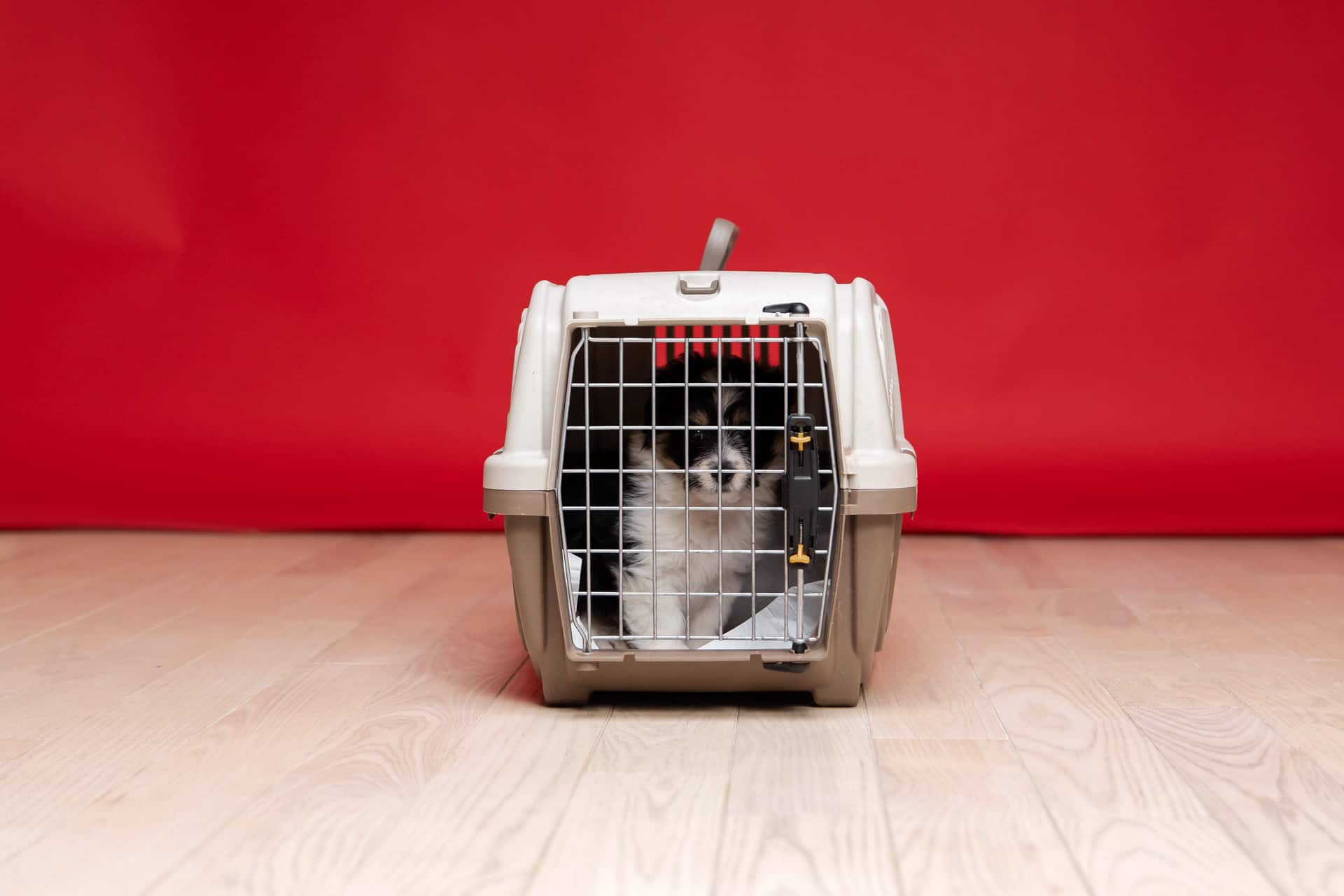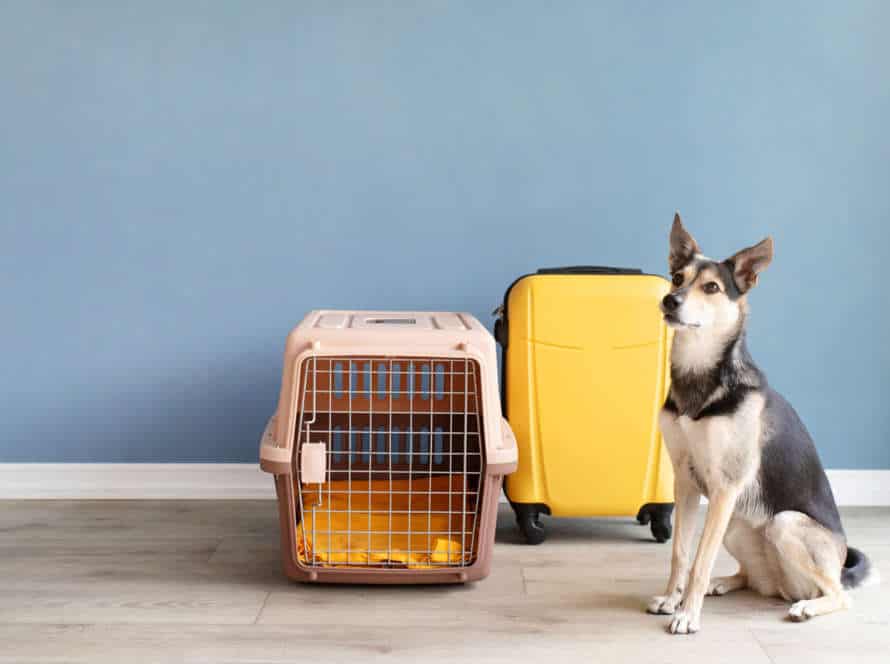Playpens for Puppies
Playpens for puppies can be a great way to explore, play, and get accustomed to different surroundings. Especially in the beginning stages of puppy-hood, when they are still getting familiar with their new home. Pros and cons? Let’s compare them with crates.
What is a playpen?
A playpen is a great choice for young children or pets to play in safely. They are especially good for puppies! Playpens provide a secure place for your pup to move around and have fun. They also help set boundaries in your home, keeping your puppy away from dangerous spots.
When deciding between a playpen and crate, think about your pup’s needs and behaviour. A playpen might be better for a pup who barks or gets anxious when confined. But if your pup has a habit of chewing things, a crate might be the better pick. Ultimately, it’s up to the owner to choose the option that best suits their puppy’s lifestyle and temperament.
Benefits of using a playpen for your puppy
A playpen is a great way to give your pup a safe, secure place to have fun. It also helps them relax when they’re tired or overwhelmed. Here are some of the benefits:
- Supervision made simpler: You can keep an eye on your pup and avoid accidents.
- Potty training help: Easily create a designated potty area for your pup.
- Safe environment: Keep your pup away from electrical cords, poisonous plants, and more.
- Cozy and comfortable: Your pup can relax in their own space with toys, bedding, and water close by.
Things to consider when choosing a playpen
When purchasing a playpen for your pup, make sure to keep certain factors in mind:
- Size: Consider the size of your pup and the amount of space they need to move and play comfortably. Too small and your pup may feel cramped and uncomfortable.
- Material: Find a long-lasting, non-toxic, and easy-to-clean material that can handle your pup’s chewing and scratching. Fabric playpens are light, while metal ones are stronger.
- Portability: If you plan on taking your pup on trips, opt for a lightweight and collapsible pen for easy transport.
- Safety Features: Check that the playpen has secure latching mechanisms to prevent your pup from escaping or getting hurt. A removable top cover is also a great safety feature to keep your pup from climbing out.
Playpens are an awesome option instead of crates, as they give your pup more room to play and move about whilst staying safe.
Crates for Puppies
Wondering what’s best for your new puppy? Playpen or crate? For house training, crates are ideal. Let’s look at their pros and cons, so you can decide what’s best for your pup!
What is a crate?
A crate is a box, usually plastic or metal. It’s used to train and contain puppies or dogs. It gives your puppy a secure and relaxing space to sleep, learn good behaviour and chill.
Using a crate has lots of perks. It’ll help with housebreaking by teaching your pup to wait until they’re outside to pee and poo. It makes them feel safe too, like they’re in their own den. Plus, it’ll stop them from being destructive when you’re not around.
Crates and playpens both have their advantages. But crates are better for housebreaking and teaching good behaviour. Playpens give your pup more space to play and exercise. However, they don’t offer the security and confinement of a crate. Pro tip – get the right size of crate for your pup’s comfort.
Benefits of using a crate for your puppy
Crating your pup has multiple benefits, making it a great aid for training and offering a secure spot for your furry mate. Here are some advantages of utilizing a crate:
- Potty Training: Crating can help with potty training your pup as they tend to hold their pee and poo while inside.
- Security and Comfort: Crating your pup ensures its protection and comfort when you’re away or during transportation by preventing potential accidents and limiting movement.
- Avoid Chewed Furniture: Puppies can be mischievous and inquisitive, they like chewing stuff nearby. A crate will guarantee your pup doesn’t do any damage when left alone.
Deciding between playpens and crates depends on your lifestyle, pup’s personality and size, and the intent. However, crates are more effective in potty training and avoiding destructive behavior. Pro Tip: Make sure the crate is comfy and the right size for your pup.
Things to consider when choosing a crate
When picking a crate for your pup, consider size, material, and if a playpen is better.
- Size: Pick a crate that’s big enough for your pup to stand, turn, and lay down easily.
- Material: Crates can be made of wire, plastic, or fabric. Each has its own advantages, like portability, toughness, and visibility.
- Playpen vs. Crate: Crates are great for potty training and sleep, but playpens give more room for play, exercise, and toys. Plus, they can be used as a safe spot while you’re away, no need for a separate crate.
- Make sure it’s easy to clean, assemble, and fits your lifestyle and space.
Provide your pup with a secure and comfy environment!
Comparison of Playpens and Crates
Playpens and crates – many think they’re the same, yet there are differences. Playpens are bigger; made of metal or fabric. Crates are small; made of tough plastic or metal. Both benefit puppy housing. Let’s compare them!
Safety considerations
When picking between a playpen and a crate for your puppy, safety must be your top priority. Both have their benefits and drawbacks, but before you decide, think of the following safety points:
- Size: Ensure the playpen or crate is big enough so your puppy can move, stretch, and stand up easily. A confined space could lead to anxious behavior, even injury.
- Material and Construction: Select a tough and durable material that your puppy can’t easily chew or break. Also, ensure the playpen or crate is built properly to prevent any hazardous edges or gaps.
- Accessibility: Both playpens and crates should have a secure opening that is easy for you to access, and difficult for your puppy to escape.
- Supervision: Always watch your puppy when they are in the playpen or crate. This helps avoid accidents, such as choking or getting stuck in a small space.
By taking these safety considerations into account, you can decide wisely and select the best option for both your puppy and your peace of mind.
Pro tip: Don’t leave your puppy in a playpen or crate for a long time. Remember, they need lots of exercise, attention, and socialization to grow into well-adjusted adult dogs.
Training considerations
Picking between a playpen or crate for pup training? It depends on your needs and pup’s temperament. Playpens provide room to move and play, while crates are more confining. Consider lifestyle, space and pup’s needs. Every pup is different. Pro tip: Provide toys, food and water for pup’s comfort!
Space considerations
Bringing home a pup? Consider the space and safety needs. Playpens and crates offer safe areas, but they’re different. Playpens offer more freedom and room to play, but not for all-day confinement. They’re suitable for puppies that are crate-trained and potty-trained.
Crates are designed for extended periods of confinement and can help with housebreaking. Plus, they offer a cozy, secure spot for your pup to sleep. Also, they keep your puppy safe when you’re away.
Choose between a playpen and a crate based on individual needs. Consider space, training, and safety when making the decision.
How to Determine Which Option is Best for Your Puppy
Choosing between a playpen and a crate for your puppy? Consider your pup’s age, size and energy. Also, their lifestyle – will they get regular exercise, playtime and enough space? Let’s review the pros and cons of each. To help you make the right choice.
Understanding your puppy’s individual needs
To decide between a playpen or crate for your puppy, you must understand their individual needs. Each option has its pros and cons.
When considering which one is best for your puppy, think of these things:
- Age: Pups that are younger may do better with a crate, whilst those that are older may prefer a playpen due to more space.
- Temperament: Anxious or timid puppies will likely be more comfortable in a crate, and the more outgoing pups may like the playpen better.
- Training: Puppies being trained may benefit from a crate, as it teaches them to control their bladder and bowel movements.
Take all this into account and observe your puppy’s behavior to choose the best fit for them.
Always remember: A content pup is more likely to succeed in training and display good behavior.
Factors to consider when making your choice
Deciding to use a playpen or crate for your pup involves factors to make the best choice. Here’s what to keep in mind:
- Size and breed: Your pup’s size and breed should decide if a crate or playpen is best. Bigger breeds need more space, so a playpen may be safer and comfier.
- Purpose: What’s the purpose of your crate or playpen? If you need to keep your pup contained when away, a crate is better. If you want a safe, supervised play area, a playpen is your go-to.
- Comfort: Think about how comfy your pup is in either option. Can they move freely? Do they have enough space to stretch and relax?
To sum up, the playpen or crate decision is based on your pup’s size/breed, purpose, and comfort.
How to introduce your puppy to the chosen option.
Introducing your puppy to a playpen or crate can be tricky. But, with the right approach, your pup will feel at ease. Here are some tips to help:
- Set up the playpen/crate in a peaceful area of your home.
- Let your puppy explore the space on their own.
- Put their favorite toys, treats and blankets inside to encourage them to go in.
- Start with short intervals and build up to longer ones.
- Never force them into it, or use it as a punishment.
- Be patient, follow through and use positive reinforcement.
Eventually, your pup will see their playpen/crate as a safe, comforting space.
Frequently Asked Questions
1. What is the difference between a playpen and a crate?
A playpen is generally a larger enclosed area where a puppy can play and move around. A crate is a smaller, more enclosed space where a puppy can rest or sleep.
2. Is one option better than the other?
It really depends on your puppy’s individual needs and preferences. Some puppies may prefer a more open space like a playpen, while others may feel more secure in a crate.
3. Can puppies be trained to use either option?
Yes, with patience and positive reinforcement, puppies can be trained to use either a playpen or a crate as a safe and comfortable space.
4. Are playpens or crates better for house-training a puppy?
Both options can be useful for house-training a puppy. It may be helpful to use a crate at night or when you are unable to keep a close eye on your puppy, while a playpen can provide a larger space for your puppy to move around and play during the day.
5. Can playpens or crates be used for adult dogs?
Yes, both playpens and crates can be useful for adult dogs as well as puppies. They can be helpful in providing a safe and comfortable space for your dog when you are not able to be with them.
6. How do I choose whether to use a playpen or a crate for my puppy?
Consider your puppy’s size, activity level, and personality when deciding between a playpen and a crate. For example, a high-energy puppy may benefit from a larger playpen, while a shy or anxious puppy may prefer the security of a crate.







